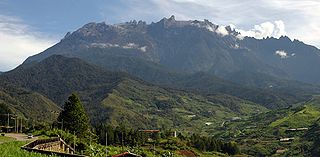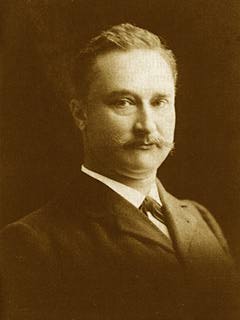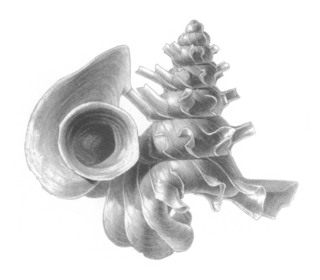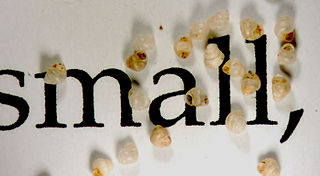
Ernst Walter Mayr was one of the 20th century's leading evolutionary biologists. He was also a renowned taxonomist, tropical explorer, ornithologist, philosopher of biology, and historian of science. His work contributed to the conceptual revolution that led to the modern evolutionary synthesis of Mendelian genetics, systematics, and Darwinian evolution, and to the development of the biological species concept.

Edward Osborne Wilson was an American biologist, naturalist, entomologist and writer. According to David Attenborough, Wilson was the world's leading expert in his specialty of myrmecology, the study of ants. He was nicknamed the "ant man".

Biogeography is the study of the distribution of species and ecosystems in geographic space and through geological time. Organisms and biological communities often vary in a regular fashion along geographic gradients of latitude, elevation, isolation and habitat area. Phytogeography is the branch of biogeography that studies the distribution of plants. Zoogeography is the branch that studies distribution of animals. Mycogeography is the branch that studies distribution of fungi, such as mushrooms.

Mount Kinabalu is the highest mountain in Borneo and Malaysia. With an elevation of 13,435 feet (4,095 m), it is third-highest peak of an island on Earth, and 20th most prominent mountain in the world by topographic prominence. The mountain is located in Ranau district, West Coast Division of Sabah, Malaysia. It is protected as Kinabalu Park, a World Heritage Site.

Marie Eugène François Thomas Dubois was a Dutch paleoanthropologist and geologist. He earned worldwide fame for his discovery of Pithecanthropus erectus, or "Java Man". Although hominid fossils had been found and studied before, Dubois was the first anthropologist to embark upon a purposeful search for them.

Pieter Bleeker was a Dutch medical doctor, ichthyologist, and herpetologist. He was famous for the Atlas Ichthyologique des Indes Orientales Néêrlandaises, his monumental work on the fishes of East Asia published between 1862 and 1877.

Lipke Bijdeley Holthuis was a Dutch carcinologist, considered one of the "undisputed greats" of carcinology, and "the greatest carcinologist of our time".

Naturalis Biodiversity Center is a national museum of natural history and a research center on biodiversity in Leiden, Netherlands. It was named the European Museum of the Year 2021. Although its current name and organization are relatively recent, the history of Naturalis can be traced back to the early 1800s. Its collection includes approximately 42 million specimens, making it one of the largest natural history collections in the world.

Danum Valley Conservation Area is a 438 square kilometres tract of relatively undisturbed lowland dipterocarp forest in Sabah, Malaysia. It has an extensive diversity of tropical flora and fauna, including such species as the rare Bornean orangutans, gibbons, mousedeer, clouded leopards and over 270 bird species. Activities offered are jungle treks, river swimming, bird watching, night jungle tours and excursions to nearby logging sites and timber mills.

Many scientists and philosophers of science have described evolution as fact and theory, a phrase which was used as the title of an article by paleontologist Stephen Jay Gould in 1981. He describes fact in science as meaning data, not known with absolute certainty but "confirmed to such a degree that it would be perverse to withhold provisional assent". A scientific theory is a well-substantiated explanation of such facts. The facts of evolution come from observational evidence of current processes, from imperfections in organisms recording historical common descent, and from transitions in the fossil record. Theories of evolution provide a provisional explanation for these facts.

Heinrich Bürger was a German physicist, biologist and botanist employed by the Dutch government, and an entrepreneur. He was important for the study of Japanese fauna and flora.

Georissa is a genus of minute land snails, terrestrial gastropod mollusks in the family Hydrocenidae. Although the species are best known for living on the surface of limestone rocks, they are often also found in and on the vegetation and on non-calcareous rocks. One species, Georissa filiasaulae, is cavernicolous. It is only known from two caves in the Sepulut area of Sabah, Malaysian Borneo, where its above-ground sister species, Georissa saulae, inhabits the rocks outside of the cave, and is connected to the cave snail via narrow zones of hybridization at the cave entrances. Possibly, G. filiasaulae has evolved without ever having been fully separated from its ancestor, a process known as speciation-with-gene-flow.

Opisthostoma mirabile is a species of air-breathing land snail with an operculum, a terrestrial gastropod mollusk in the family Diplommatinidae.

Amphidromus inversus is a species of air-breathing land snail, a terrestrial pulmonate gastropod mollusk in the family Camaenidae.
Contributions to Zoology is a scientific journal that started in 1848 as a publication of the Committee in charge of the library of the Dutch Royal Zoological Society "Natura Artis Magistra" and became integrated in the library of the University of Amsterdam in 1939. Since 2019 the journal is published by Brill publishers, Leiden. The journal has been freely available online since 1997. The current editor-in-chief is Ronald Vonk from Naturalis Biodiversity Center, Leiden.

The island of Borneo is located on the Sunda Shelf, which is an extensive region in Southeast Asia of immense importance in terms of biodiversity, biogeography and phylogeography of fauna and flora that had attracted AR Wallace and biologists all over the world.

Freek Jacobus Vonk is a Dutch biologist who specializes in herpetology with a special interest in snake venom. He travels the world in search of the most spectacular and bizarre creatures. He has been bitten by a number of venomous snakes, almost lost his arm due to a Caribbean reef shark bite and has housed several parasites in his own body.

Acmella nana is a species of land snail discovered from Borneo, Malaysia, in 2015. It was described by Jaap J. Vermeulen of the JK Art and Science in Leiden, Thor-Seng Liew of the Institute for Tropical Biology and Conservation at the Universiti Malaysia Sabah, and Menno Schilthuizen of the Naturalis Biodiversity Center in Leiden. It was named nana due to its minute size. Measuring only 0.7 millimeters in size, it is the smallest known land snail as of 2015. It surpasses the earlier record attributed to Angustopila dominikae, which is 0.86 mm in size, described from China in September 2015.

Plectostoma obliquedentatum is a species of air-breathing land snail with an operculum, a terrestrial gastropod mollusk in the family Diplommatinidae.

Christa Laetitia Deeleman-Reinhold is a Dutch arachnologist. She specializes in spiders from Southeast Asia and Southern Europe, particularly cave-dwelling and tropical spiders. She donated a collection of about 25,000 Southeast Asian spiders, the largest collection of Southeast Asian spiders in existence, to the Naturalis Biodiversity Center in Leiden. In addition to numerous articles, she has written the book Forest Spiders of South East Asia (2001).



















